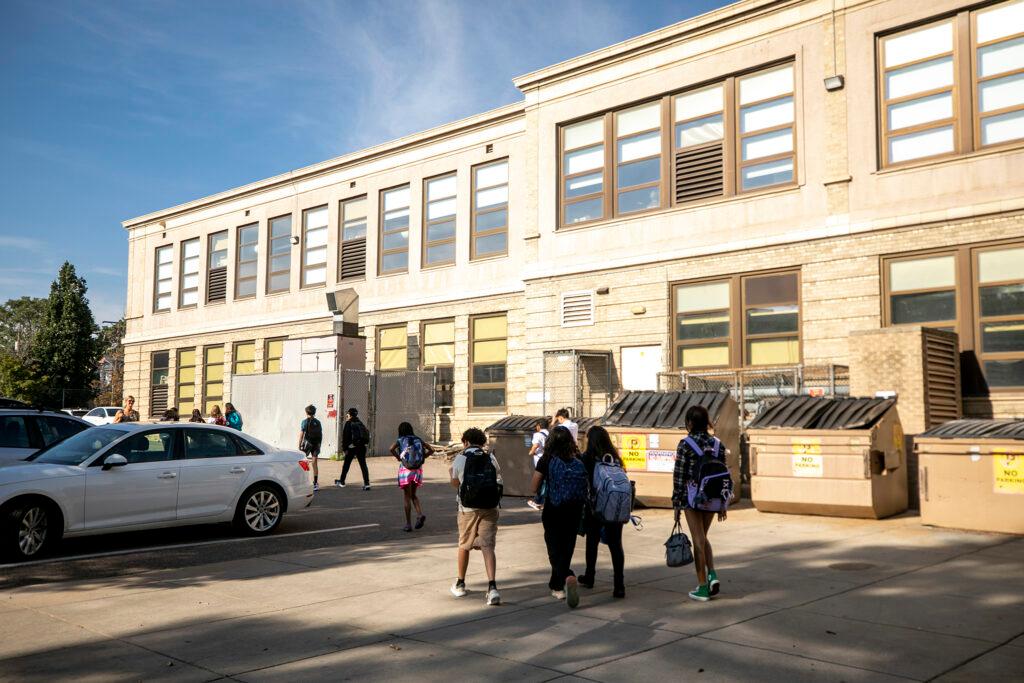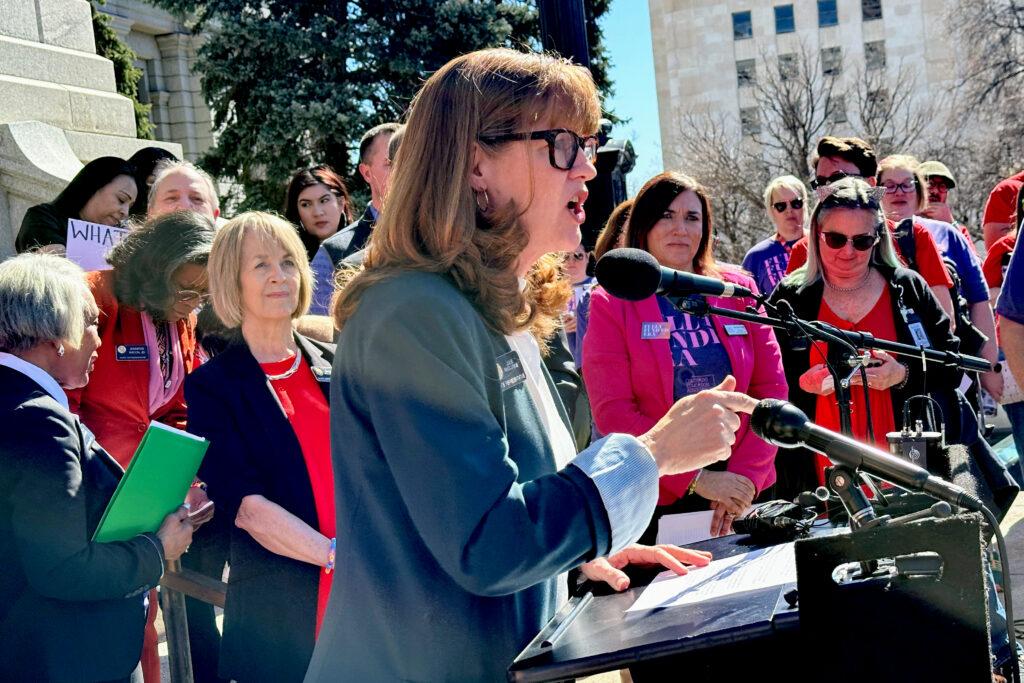
With less than a month left in the legislative session, how Colorado funds its schools could change.
Colorado hasn’t significantly changed the formula used to fund schools in three decades. Multiple attempts to change it have failed, but the duties of schools have changed radically during that time with schools enrolling children with significantly more needs.
“I do not want to see us wait another day to address the equity that is lacking in our current approach,” said House Speaker Julie McCluskie, who introduced an overhaul to the current funding formula Thursday.
McCluskie said the current formula is confusing, overly complex, is built around districts rather than students, and directs more funding to wealthier districts rather than children who have significant needs.
Her proposal shifts funding more to the qualities of students rather than district factors, like size. That means more money for students living in poverty, students learning English, and students with special needs. It also would shift more funding to remote rural districts.
McCluskie’s driving impetus was that Colorado drastically underfunds students with higher needs.
“How can we better drive more resources to students who are at most risk of falling behind?” she asked.
If passed, the formula wouldn’t go completely into effect until the 2030-31 school year. However, in the interim starting in 2025-26, districts would be funded using a phase-in model. She called it a wholesale change.
Some of the changes draw upon the work of a bipartisan task force whose recommendations would cost over half a billion dollars each year. Their proposal aimed to prioritize higher-needs students, lower property-wealth districts, and small rural districts.
Colorado’s current funding model takes the number of students in a district and adjusts based on school district size, cost of living, personnel costs and extra student needs such as whether a pupil is at risk. McCluskie’s proposal puts adjustments for student risks at the beginning of the formula, giving them more weight.
“Our job is to make sure that we are delivering state funding in a way that ensures the kids with the greatest needs are getting the greatest help,” she said.

McCluskie said many districts would ultimately get significantly more funding. About four or five districts would get less funding but additional resources are promised to protect them, she said.
Once the formula is fully implemented, the Center Consolidated School District in the San Luis Valley, for example, would get nearly 19 percent more funding, with $2,970 more per pupil. East Grand County district on the Western Slope would see a 28 percent increase in funding with $3,450 more per pupil. Denver Public Schools funding would increase about 5 percent or $50 million when fully implemented.
Where will the money come from?
McCluskie said her proposal would cost slightly less than the $539 million the task force plan called for. To pay for her proposal, lawmakers would tap the K-12 education fund, which currently has $1.5 billion in income tax revenue. The proposal relies on a phased-in approach, costing about $83 million each year over six years to reach nearly half a billion more into education by 2030.
“I think that $83 million annual increase in the entire total program kind of year over year is a sustainable pathway to ensure that we don't put our public schools at risk,” she said.
Some districts worried about what this may mean for funding down the road
Last month, 11 superintendents raised concerns, saying that the then-proposal, without adequate and sustainable base funding, would harm some students. Colorado still falls $2,000 to $2,500 behind the national average for per-pupil funding.
Several districts said they appreciate the work on the proposal but remain concerned about the sustainability of the funding and uncertainties over whether property taxes will be capped in Colorado. They would also prefer that the state’s first-ever “adequacy studies” on how much it actually costs to educate children are finished before making any changes.
Some districts that have not been able to get local taxpayers to contribute as much to the education of their students worry they will see a decline in funding.
“Does it break a little bit of china on the pathway?” said Sen. Paul Lundeen. “Yeah, but you can't make significant, meaningful, multi-decade change in policy without breaking a little bit of china. The math is always going to be the math. At the end of the day, if we ask the question, ‘Does this help? Or does this harm student achievement?’ I think we've come up with the right answer.”
Other districts, especially those with large populations living in poverty, applauded the proposal
A press release from the House Democrats named 37 of Colorado’s 178 school districts that support the proposal, including Denver Public Schools and Colorado Springs Schools D11. It's unclear where the other districts stand. It also said the proposal is supported by education reform groups including Democrats for Education Reform, Colorado Succeeds, Stand for Children, and Ready Colorado.
Gov. Jared Polis also backs the plan.
Chuck Carpenter, the chief financial officer of Denver Public Schools and the chair of the school finance task force, said the proposal adheres to the basic principles the group recommended: that the qualities of students should play a bigger role than the wealth or size of a community.
“We need to increase funding for our at-risk (students), we need to increase funding for students learning languages, we need to increase funding for students with special education. And we don't need to get rid of district factors. But they don't need to be the first thing that the formula asks.”
Deirdre Pilch, superintendent of the Greeley Evans 6 School District, said it was time to update the formula.
More than 70 percent of students in her district live in poverty, 20 percent are English language learners, and 5 percent are homeless. She said more funds would mean being able to extend the school day and school year, hire math and reading specialists, and purchase more supports, such as “family services, food pantries, laundry facilities, parenting ed classes, where parents can come to us and learn English as a language so that they can support their children in their home.”
The Colorado Association of School Executives shares the bill sponsors’ goals of more funding for the students with higher needs. It wants to dig into the spreadsheets and formulas now to understand whether the numbers match the policy goals.
“Over the many years of trying to improve school finance, we know that when goals are applied to a formula, there are surprises, outliers, and anomalies that we need to understand, as sometimes the policy goal and the funding reality don’t totally match,” said CASE executive director Bret Miles. “So we are eager to dig in.”









